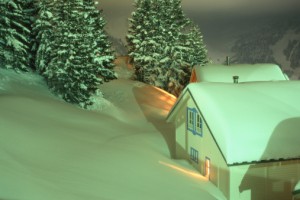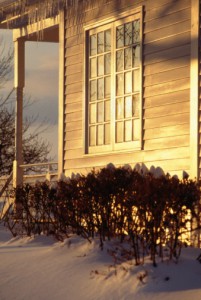Brr, Its Cold in Here: How to Winterize Your Home
January 6, 2014 2:39 pmUnless you happen to be in Key West, you—and your house—are likely experiencing the worst winter the country’s had in twenty years. Temperatures have been dropping below zero, and the bitterly cold wind has brought snow and ice from New York down to Texas. As you bundle up and stay indoors, you probably didn’t consider the beating your home is taking from the weather.
Sure—you know all about the dangers of frozen pipes and what you can do to prevent them. But with temperatures severe enough to freeze skin in minutes, what other damage is being done to your home, and what can you do? We’re here to help:
Before the Big Freeze: It may be a little late for this section to help your current situation, but save it as a reference for later. After all, this is Oklahoma weather we’re talking about!
- Have an emergency kit containing rock salt for melting walkways, sand to improve traction, snow shovels, and fuel for your heating source, batteries, and adequate layers. Water, snacks, and a radio may also be included. Your kit should be kept in a safe, dry place that’s easy for you to access should you need it.
- Create a communications plan for your family and other members of your household, should you be separated due to the weather. This should include how to contact each other as well as how and where you plan to meet up in case of an emergency.
- Winterize your home by insulating your pipes and windows, and placing a sealant over your roof shingles. Minimize activity to only a few rooms to maximize heat retention, and invest in a humidifier to keep warmth in the air. Pets should be brought inside but confined to a safe area. If you live in an area especially prone to cold weather, you may also want to invest in insulated tiles and thermal windows for long-term winterization.
During the Freeze: If it’s too late and the cold’s already here, you’ll want to review this list of what to do:
- Minimize activity, especially when temperatures drop severely. Staying indoors isn’t always possible, so when you do leave your home let someone know exactly where you’re going as well as an anticipated time of arrival. Try not to travel alone, or overexert yourself. If you’re going to be gone for multiple days at a time, set the temperatures inside your home to no lower than 55 degrees Fahrenheit.
- Learn the signs of frostbite and hypothermia so you can watch for them. Always have on dry clothing in heavy layers, and change out of damp clothing as soon as possible.
- Little changes, like switching the direction of your fan blades, will also help you stay warm during the winter. Be sure to properly ventilate your ulterior heating methods, such as kerosene lamps and gas stoves. Finally, don’t underestimate the amount of heat candles can produce.
If you’re not used to Siberia-like temperatures, winter storms like this can catch us all of guard. The last thing you want to worry about is what kind of repairs your home will need once the ice thaws, so let us help! Contact us if you have any questions regarding what kind of preparations you can install on your home before the next storm hits.



